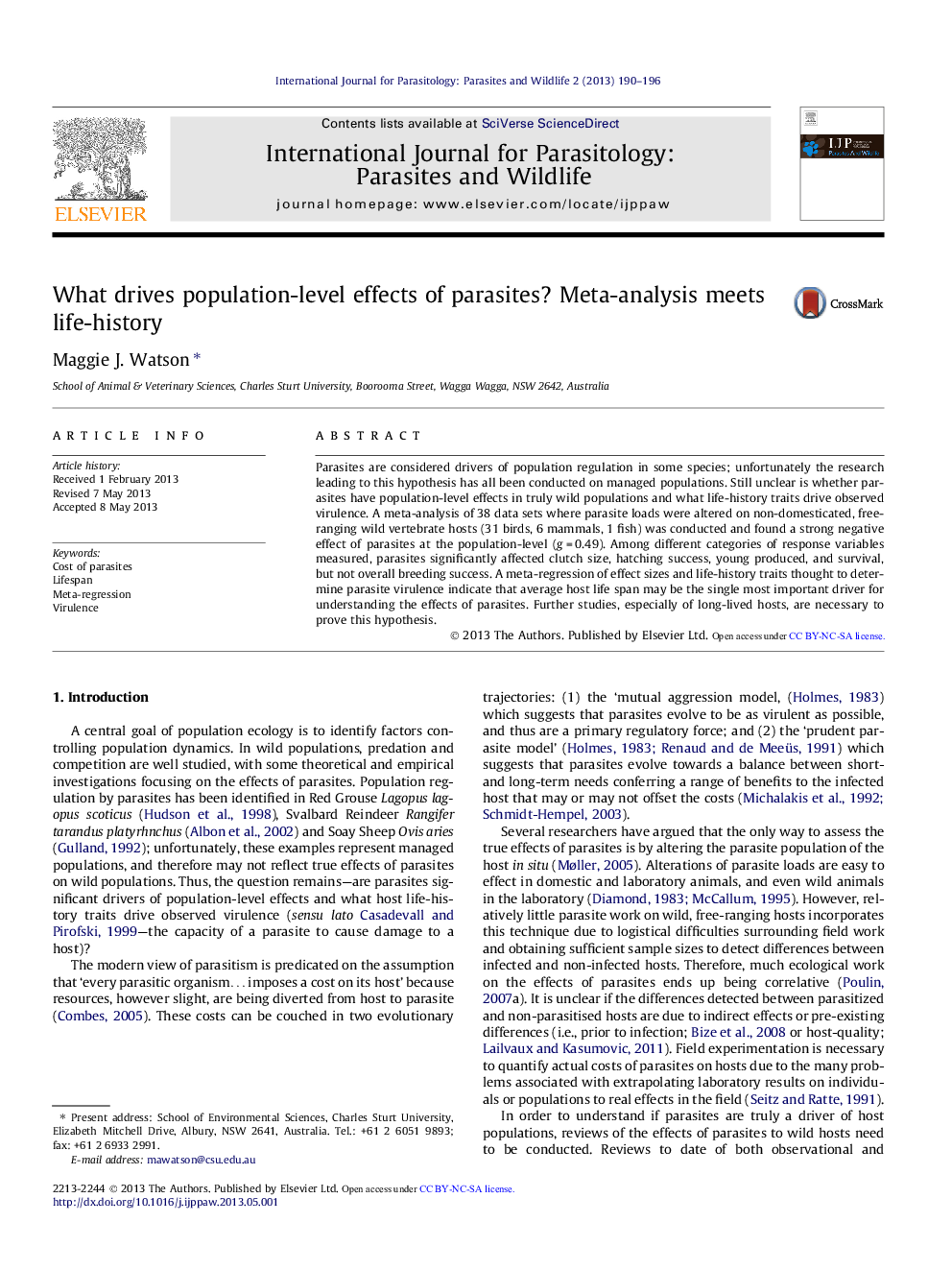| Article ID | Journal | Published Year | Pages | File Type |
|---|---|---|---|---|
| 2055293 | International Journal for Parasitology: Parasites and Wildlife | 2013 | 7 Pages |
•A meta-analysis of the effects of parasites was conducted.•Significant effects of parasites at the population level were found.•A meta-regression of effect sizes on life-history traits was also done.•Host lifespan was found to correlate significantly with parasite virulence.
Parasites are considered drivers of population regulation in some species; unfortunately the research leading to this hypothesis has all been conducted on managed populations. Still unclear is whether parasites have population-level effects in truly wild populations and what life-history traits drive observed virulence. A meta-analysis of 38 data sets where parasite loads were altered on non-domesticated, free-ranging wild vertebrate hosts (31 birds, 6 mammals, 1 fish) was conducted and found a strong negative effect of parasites at the population-level (g = 0.49). Among different categories of response variables measured, parasites significantly affected clutch size, hatching success, young produced, and survival, but not overall breeding success. A meta-regression of effect sizes and life-history traits thought to determine parasite virulence indicate that average host life span may be the single most important driver for understanding the effects of parasites. Further studies, especially of long-lived hosts, are necessary to prove this hypothesis.
Graphical abstractFigure optionsDownload full-size imageDownload as PowerPoint slide
